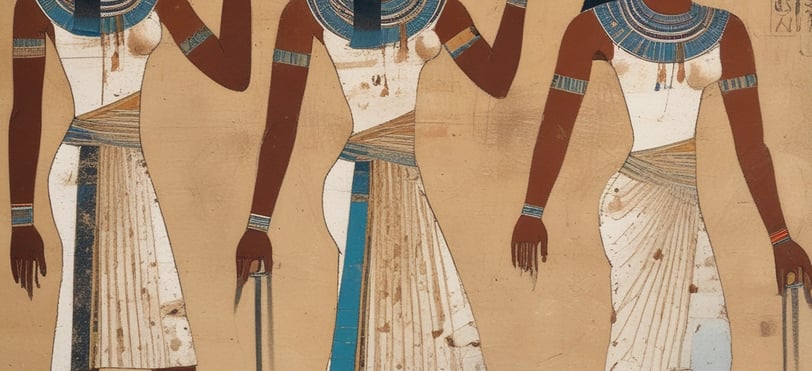The Beginnings of Classic Manicure
The History of the first manicures.
Laura Petersone
4/8/20252 min read


The Origins of the Classic Manicure: A Journey Through Time
When we think of a classic manicure today, we picture neatly filed nails, softened cuticles, and a flawless polish finish—whether a natural nude or a bold red. But have you ever wondered where this beauty ritual began? The history of the manicure is as rich and colorful as the polishes we use today. Let’s take a step back in time and explore how this timeless beauty treatment evolved.
Ancient Beginnings: Beauty in the Time of Pharaohs
The earliest recorded evidence of nail care dates back over 5,000 years ago to Ancient Egypt. Nail color wasn’t just about beauty—it was a symbol of status and power. Egyptian women, especially royalty like Cleopatra, used natural ingredients like henna to tint their nails a deep reddish-brown. The darker the nails, the higher the social rank. Lower classes were restricted to paler shades, if any color at all.
From China With Color: Early Nail Lacquer
Around 3,000 BC, in ancient China, nail care had its own significance. The Chinese developed one of the first forms of nail polish made from a blend of beeswax, egg whites, gelatin, and colored powders. Royals in the Ming dynasty often wore bright colors like gold and silver on their long nails to reflect nobility and elegance. Long nails were also a sign of wealth—they meant you didn’t have to work with your hands.
Roman and Greek Influences
The Greeks and Romans took a slightly more minimal approach. While they didn’t paint their nails, they used buffing techniques to give nails a healthy shine. Soldiers in Ancient Rome even cleaned and cared for their nails as part of their grooming rituals. Clean nails were associated with discipline and respect.
The Rise of Modern Manicures in Europe
The true birth of the modern manicure began in the 19th century. In 1830, a French doctor named Dr. Sitts invented the orange stick—a simple wooden tool still used today to gently push back the cuticle. This innovation revolutionized nail care, making manicures more accessible and gentle.
By the early 20th century, manicures became fashionable among European and American women. Nail salons started appearing in cities like Paris, London, and New York. The classic manicure, with its clean shape, well-cared-for cuticles, and elegant polish, became a symbol of femininity and sophistication.
The Birth of Nail Polish
In the 1920s, inspired by the glossy finishes on cars, the first modern nail polish was born in France. Michelle Menard, working for Charles Revson (founder of Revlon), created a formula that gave nails a smooth, shiny finish. This marked the beginning of the nail polish industry as we know it today.
By the 1930s, the classic red manicure became a must-have look, popularized by Hollywood actresses. The style evolved into what we now know as the “half-moon manicure”, where the base of the nail was left bare while the tip was painted.
A Tradition That Endures
From ancient empires to red carpets, the classic manicure has traveled through centuries, evolving with fashion, culture, and innovation. While trends may come and go, the essence of a classic manicure—clean, polished, and elegant—remains timeless.
Whether you’re doing your nails at home or visiting a salon, every manicure you experience is part of a beauty tradition that spans millennia. Isn’t that amazing?.
